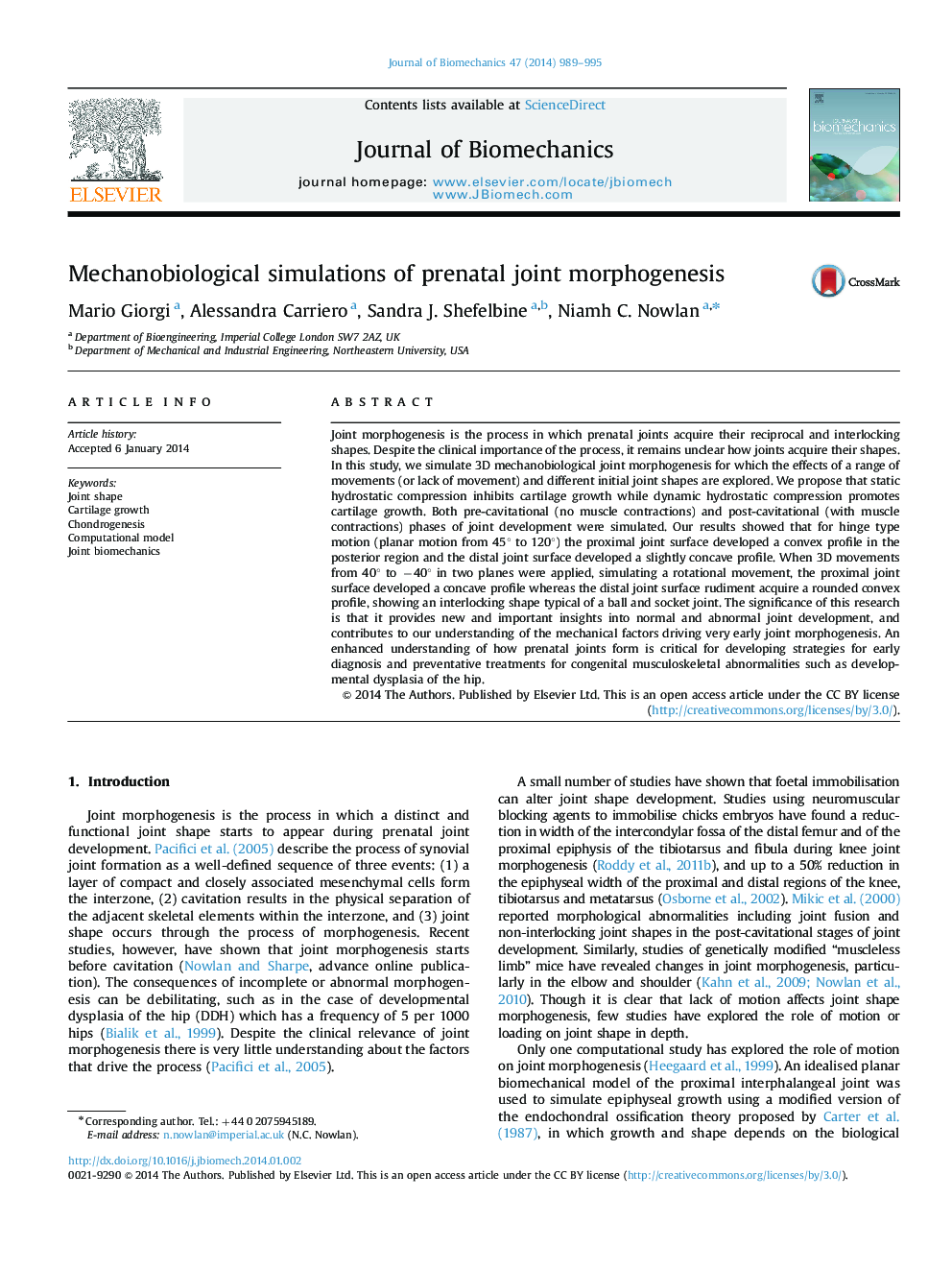| Article ID | Journal | Published Year | Pages | File Type |
|---|---|---|---|---|
| 10432408 | Journal of Biomechanics | 2014 | 7 Pages |
Abstract
Joint morphogenesis is the process in which prenatal joints acquire their reciprocal and interlocking shapes. Despite the clinical importance of the process, it remains unclear how joints acquire their shapes. In this study, we simulate 3D mechanobiological joint morphogenesis for which the effects of a range of movements (or lack of movement) and different initial joint shapes are explored. We propose that static hydrostatic compression inhibits cartilage growth while dynamic hydrostatic compression promotes cartilage growth. Both pre-cavitational (no muscle contractions) and post-cavitational (with muscle contractions) phases of joint development were simulated. Our results showed that for hinge type motion (planar motion from 45° to 120°) the proximal joint surface developed a convex profile in the posterior region and the distal joint surface developed a slightly concave profile. When 3D movements from 40° to â40° in two planes were applied, simulating a rotational movement, the proximal joint surface developed a concave profile whereas the distal joint surface rudiment acquire a rounded convex profile, showing an interlocking shape typical of a ball and socket joint. The significance of this research is that it provides new and important insights into normal and abnormal joint development, and contributes to our understanding of the mechanical factors driving very early joint morphogenesis. An enhanced understanding of how prenatal joints form is critical for developing strategies for early diagnosis and preventative treatments for congenital musculoskeletal abnormalities such as developmental dysplasia of the hip.
Related Topics
Physical Sciences and Engineering
Engineering
Biomedical Engineering
Authors
Mario Giorgi, Alessandra Carriero, Sandra J. Shefelbine, Niamh C. Nowlan,
